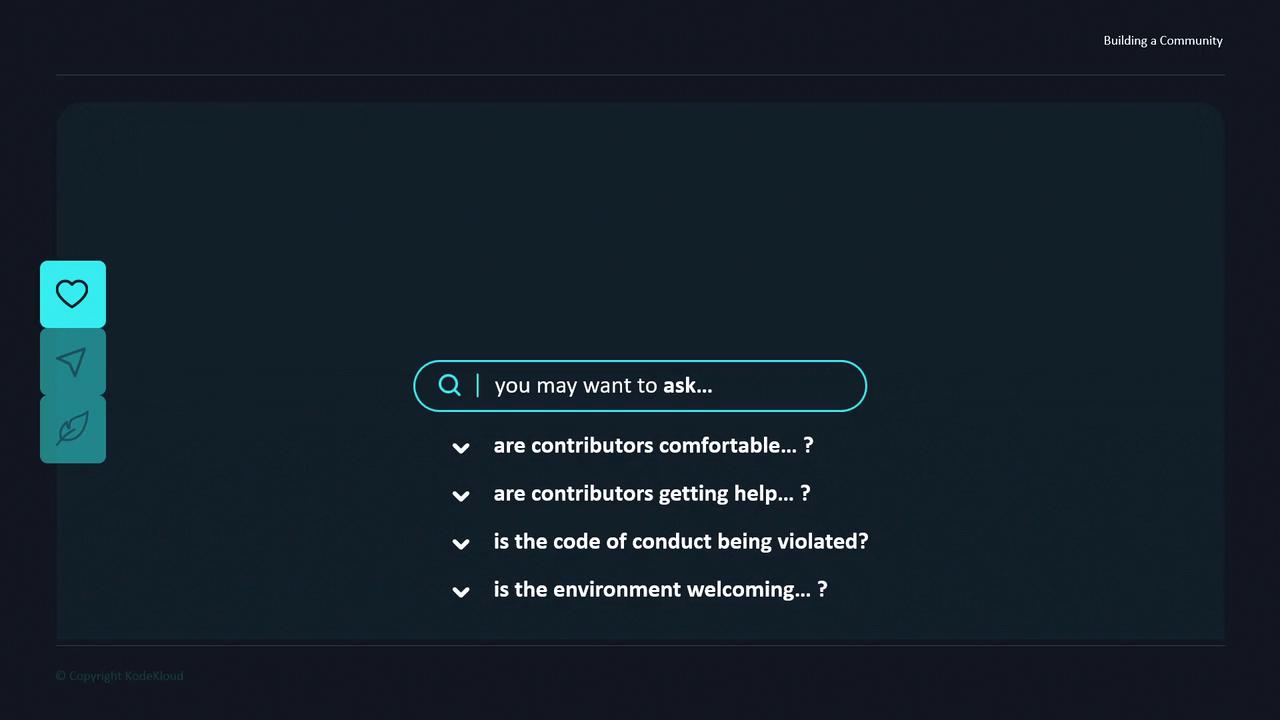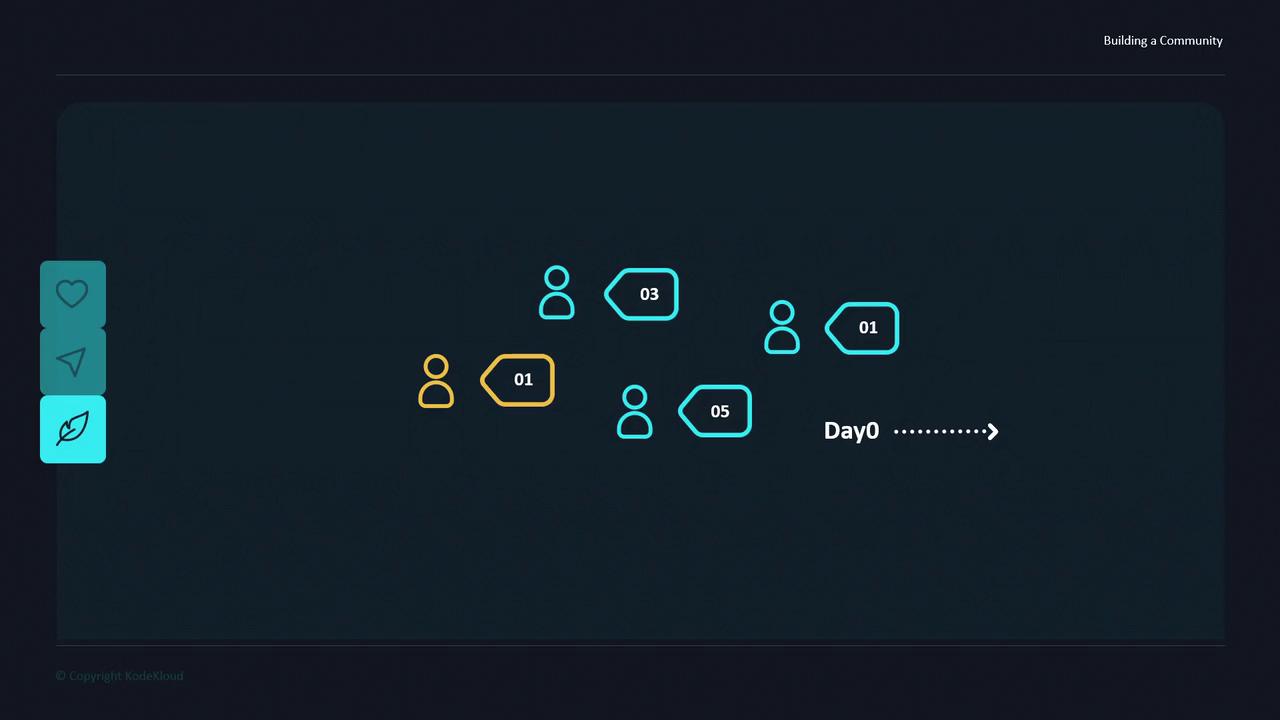Open Source for Beginners
Starting Your Open Source Project
Building a Community
In this guide, we’ll show you how to cultivate a thriving open source community around your project. Launching your repository is just the beginning—sustained success depends on engaged contributors, transparent governance, and seamless collaboration. A healthy community not only boosts your project’s reputation but also drives innovation and adoption.
Note
Contributor experience (CX) is as crucial as user experience (UX). Happy contributors become your most passionate advocates.
Table of Contents
- Key Strategies at a Glance
- 1. Healthy Collaboration Environment
- 2. Access to Knowledge
- 3. Avoid Overwhelming Contributors
- Further Reading and Resources
Key Strategies at a Glance
| Focus Area | Objective | Example Resources |
|---|---|---|
| Collaboration Environment | Foster respectful, inclusive discussions | Contributor Covenant |
| Access to Knowledge | Provide clear docs, tutorials, and FAQs | README, wiki, docs site |
| Contributor Onboarding | Offer small tasks, mentorship, and clear roadmaps | Issue triage, pairing sessions |
1. Healthy Collaboration Environment
Building trust starts with a respectful, welcoming atmosphere. Reflect on these questions to assess your project’s culture:
- Are new contributors encouraged to join discussions and open issues?
- Do maintainers respond to questions and pull requests within a reasonable timeframe?
- Is your Code of Conduct visible, enforced, and linked in key files?
- Does the community greet newcomers and help them find their first tasks?

Warning
An ambiguous or unenforced Code of Conduct can lead to misunderstandings and conflict. Keep it up to date and ensure everyone follows it.
2. Access to Knowledge
Contributors thrive when they know where to look for information. Organize your documentation and communication channels:
- Define an “access graph” mapping repos, docs, chat rooms, forums, and issue trackers.
- Create step-by-step guides for installation, development setup, and submitting PRs.
- Centralize links in a single source of truth (README.md, wiki, or dedicated docs site).
By structuring resources logically, you reduce onboarding friction and empower contributors to move forward independently.
3. Avoid Overwhelming Contributors
People join projects with different skill levels. Set clear, realistic expectations and guide contributors through a progressive learning curve:
- Provide a CONTRIBUTING.md file with a roadmap of low-barrier tasks (documentation fixes, small bug reports).
- Offer mentorship programs or pairing sessions for first-timers.
- Gradually expose contributors to larger issues as they gain confidence.

By fostering a supportive environment, granting easy access to information, and setting achievable milestones, you’ll establish the foundation for a sustainable, engaged open source community. Start applying these practices from day zero to make contributors feel valued and empowered throughout their journey.
Further Reading and Resources
Watch Video
Watch video content